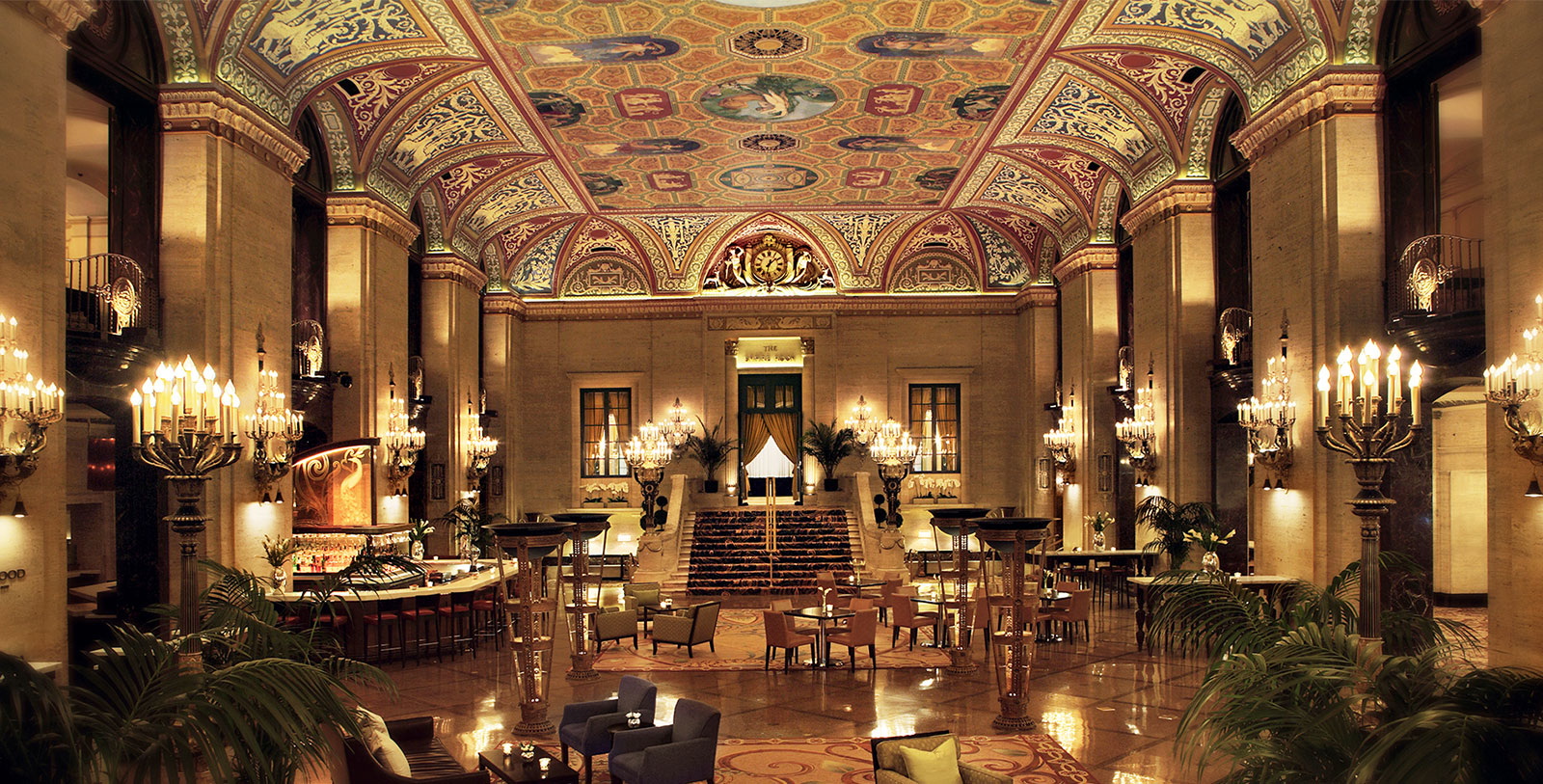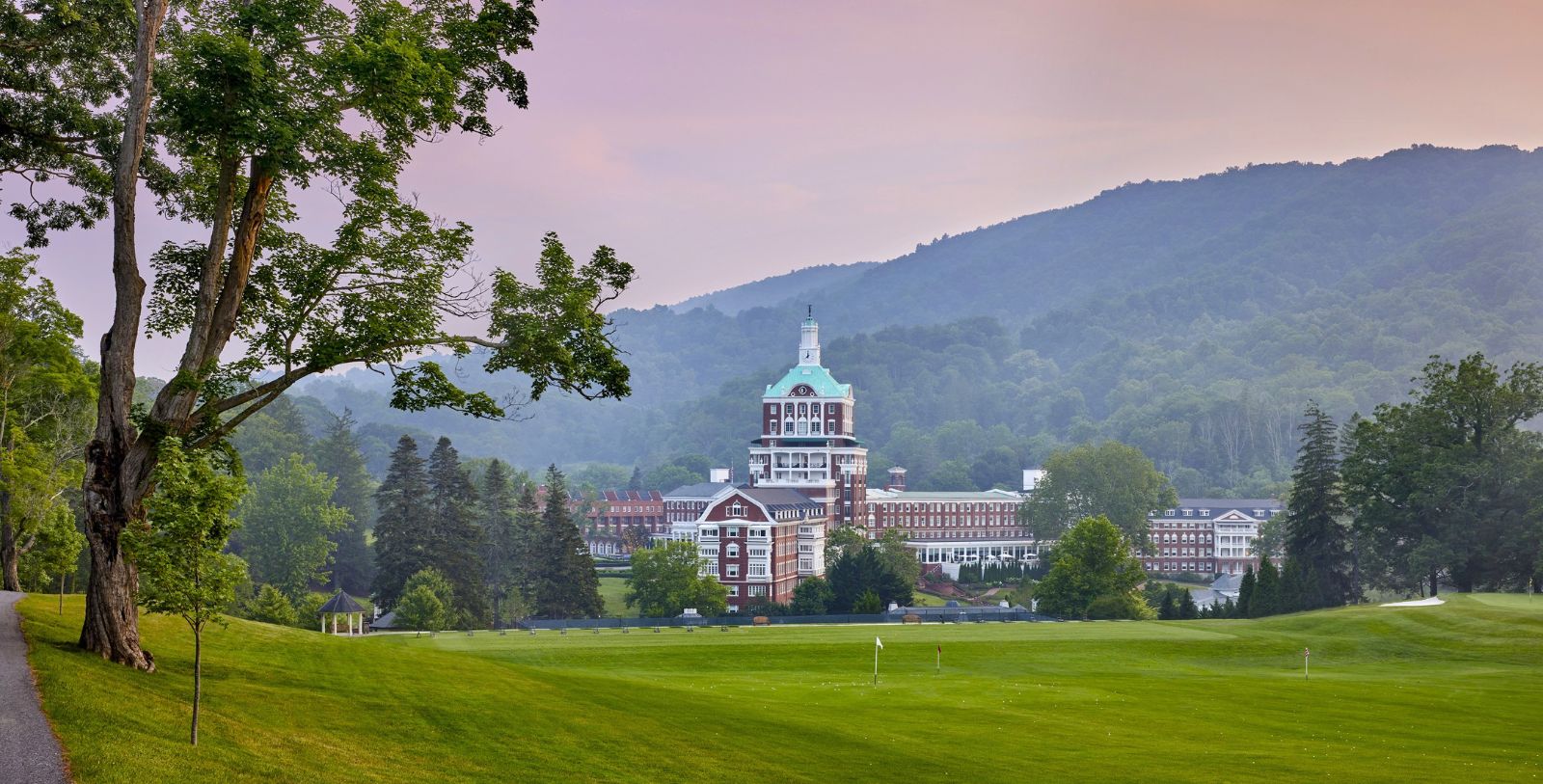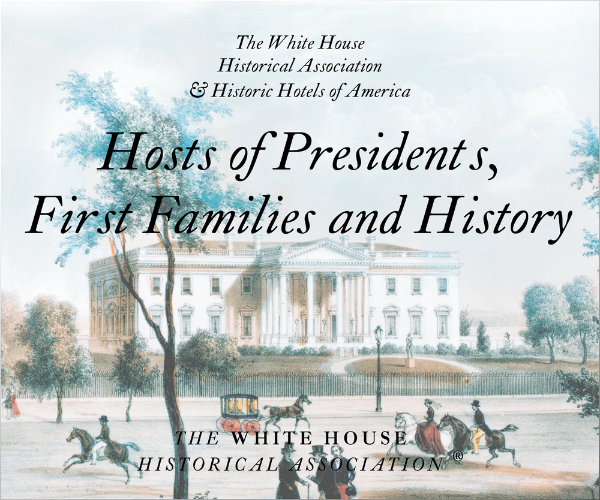Taking in the dizzying view above San Francisco from the northwest windows of the Top of the Mark, it’s hard to believe that very corner is laced with tragedy.
Below, the red stone James C. Flood Mansion and Grace Cathedral watch over dog walkers in Huntington Park. Between the Russian Hill high-rises, the bay’s waters to Alcatraz and Angel Island peek through, and on to the Golden Gate Bridge and ocean beyond.
Years ago, in place of tourists and business guests snapping the panoramic sight on their phones, loved ones would gather there to get one last glimpse of soldiers’ warships heading out to battle, earning the corner of the fabled bar the name “Weepers' Corner.”
During World War II, San Francisco was the biggest port on the West Coast, and the recently opened Top of the Mark went from what Life magazine described as “the exclusive night spot rendezvous for San Francisco cafe society” to a Pacific-bound serviceman’s last port of call.
A 1944 Time magazine story wrote that up to 30,000 soldiers and sailors came up the elevator every month for a final drink on American soil. Packed to the rafters, the swing band would play as couples danced. Servicemen toasted the Golden Gate believing it would bring them good luck, praying it wouldn’t be their last martini.
“A lot of ships were shipping out from Treasure Island. Officers would leave a bottle for fellow squadron members for when they came back from their tour of duty,” InterContinental Mark Hopkins hotel manager Jaap Boelens tells me over a dirty vodka martini. As so often is the case on the 19th floor, the view distracts us. “It’s iconic. It really is a very good looking city,” he says. “The sunset is different almost every time, with the fog rolling in. It feels timeless.”
The bottle ritual went something like this: Servicemen who returned from battle could claim a free bottle of bourbon from behind the bar. Once they signed a note and attached it, their squadron could drink from it for free if and when they also returned.
The only catch was that the last officer to take a sip had to buy the next bottle. The tradition acted as an unofficial way to document those who returned from war, and to honor those who didn’t.
“At that time, everyone was either going to Japan for the expected big battle, or they had just come back from a big battle like Iwo Jima or Okinawa,” veteran T. J. Chapman told his grandson Boston Globe writer Keith Chapman. “You were either drinking to celebrate that you hadn’t been killed, or you were drinking to forget that you might.”
A member of Historic Hotels of America, The Mark Hopkins Hotel was built on the footprint of its namesake’s Victorian fairy castle of a home that was destroyed in the 1906 earthquake. The hotel built in the railroad baron’s honor became a sensation in 1939 when owner George D. Smith chose to knock down all the walls in the penthouse suite on the 19th floor and turn it into a glass-walled cocktail lounge with 360 degree views of the city.
Seven decades after its time as a wartime icon, the hotel helped the city through more hard times as the luxury rooms filled with first responders during the early depths of the coronavirus pandemic.
“It was interesting. I’d never closed a hotel before,” Boelens says. “It was high stress, high anxiety. There was a lot of uncertainty in the world. It got very quiet on the streets. We didn’t know how long it was going to last.”
The contract with the city saw Muni drivers, police, firefighters and hospital workers with commutes use the hotel when BART service was cut in half.
“We had a lot of nurses from S.F. General. Anyone who had a long commute stayed with us. It didn’t feel like a hotel, it felt like a small apartment building. You got to know the people very well. We gave them to-go bags for dinner.”
The hotel reopened to tourists in August 2020 but was forced to shutter again in January after travel restrictions saw occupancy rates drop to single digits. The bar is now open, though the regular pianist, band nights and Sunday brunch are still on hold. Boelens says his goal is to restart Sunday brunch by Fleet Week in October, so guests can get a sky-high view of the Blue Angels.
“I’m looking forward to bringing that all back,” Boelens says. “It brings a lot of life.”
As we talk, waiter Jose Cervano brings us drinks and napkins with a smile. Cervano has been serving patrons on the 19th floor since 1975. “The staff is ready, they’re happy to be back,” Boelens says.
The best way to visit the Mark is maybe before sunset, after a stroll around Huntington Square. The historic block and the bar seem to be of a pair, and of a different time. Once the site of the robber barons’ wedding-cake mansions that crumbled in 1906 (save for the Flood Mansion, which somehow survived the fire), the place is now a tranquil oasis right on top of the bustling city.
A good starting point is Grace Cathedral’s gilded “Doors of Paradise.” Down the steps the diocese marks the former spot of a 40-foot-tall "spite fence" built by a furious Charles Crocker. Huntington Park fills the footprint once occupied by the mansion of another railroad magnate, Collis Huntington, and is centered around the curious “fountain of the turtles.” The Brocklebank Apartments on the corner of Mason and Sacramento may be most recognizable as where James Stewart started his agonizingly slow car chase in “Vertigo,” and also once housed San Francisco columnist Herb Caen.
The fortress-like James C. Flood Mansion, now the headquarters of maybe the most elite club in California, the Pacific-Union Club, sits across from the flags of the Fairmont Hotel where Tony Bennett first sang “I Left My Heart in San Francisco” (and more recently famous for Sean Connery throwing an FBI agent from the roof in “The Rock”).
From there, across the cable car tracks of California Street, is the Top of the Mark elevator.
“You can be on the hill and fully entertain yourself for a whole day,” Boelens says. “Many other places in San Francisco have been around for as long, but they’re not on top of Nob Hill. It’s untouched up here.”
The bar is still frequented by those in uniform today, among a mishmash of tourists and guests on business. And no bar in San Francisco, or maybe anywhere, can count as many famous visitors. Boelens tells me that over the years everyone from Elvis Presley to Michael Jackson to Barack Obama and the Dalai Lama have taken in the view.
Until the ’90s the windows circled the entire room with an old circular bar in the middle. The bar was moved to the corner so the central space could be used for dancing and banquet events, meaning the Pine Street facing wall is now windowless.
“We still want to say it’s 360,” Boelens laughs. “If you put your face against the glass.”
On my way back to the elevator, host Brian Hamilton ushers me toward the glass cabinet containing the squadron bottles, and tells me the wartime tradition is still going strong. One recent note on a bottle of gin from a veteran honors those who died in the Kabul terror attack in August. Hamilton unlocks the case and hands me a green bottle with a note on it.
“An older gentleman asked to add this to our collection last week,” he says. “He wasn’t a war vet, but he survived the Holocaust. He’s nearly 100.”
The combination of heartache and good cheer on the handwritten note epitomize the timeless draw of the bar.
“As a holocaust survivor I am so grateful to to all the service men and women who served during World War 2. Enjoy this bottle of tequila.”
Discover the history of the InterContinental Mark Hopkins Hotel and book your stay to take in the views from the Top of the Mark!
Read the full article from SFGate here.
About Historic Hotels of America®
Historic Hotels of America is the official program of the National Trust for Historic Preservation for recognizing and celebrating the finest Historic Hotels. Historic Hotels of America has more than 300 historic hotels. These historic hotels have all faithfully maintained their authenticity, sense of place, and architectural integrity in the United States of America, including 44 states, the District of Columbia, the U.S. Virgin Islands, and Puerto Rico. Historic Hotels of America is comprised of mostly independently owned and operated historic hotels. More than 30 of the world’s finest hospitality brands, chains, and collections are represented in Historic Hotels of America. To be nominated and selected for membership into this prestigious program, a hotel must be at least 50 years old; has been designated by the U.S. Secretary of the Interior as a National Historic Landmark or listed in or eligible for listing in the National Register of Historic Places; and recognized as having historic significance.
































